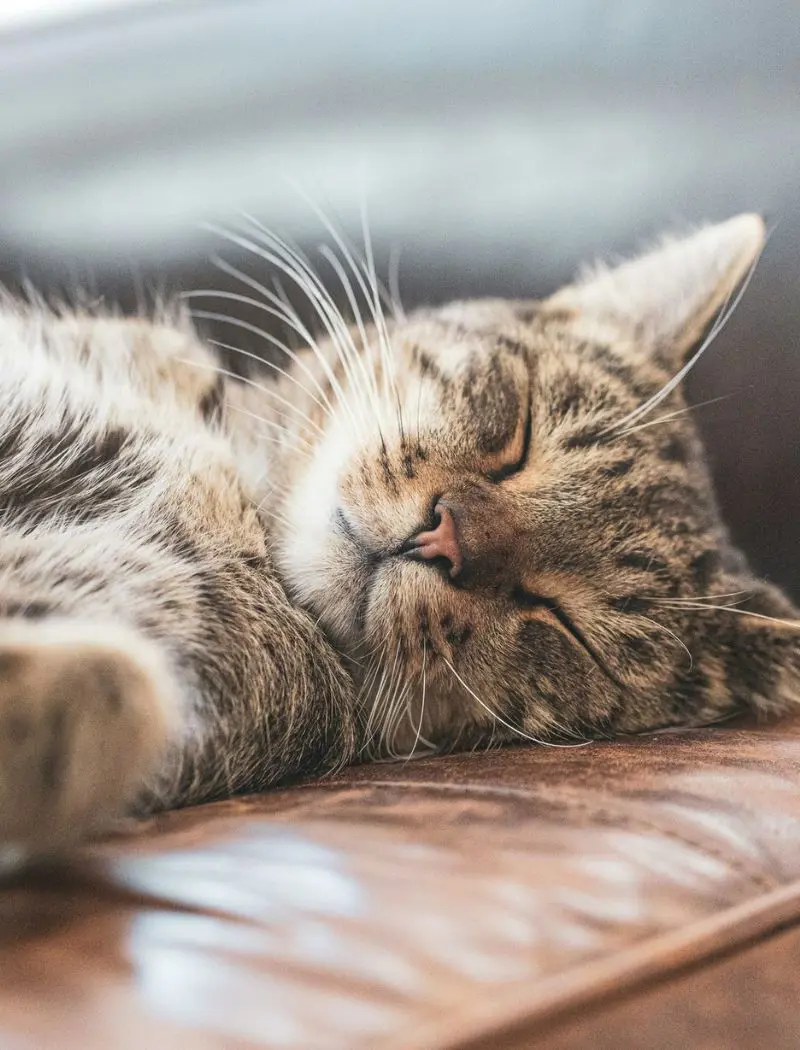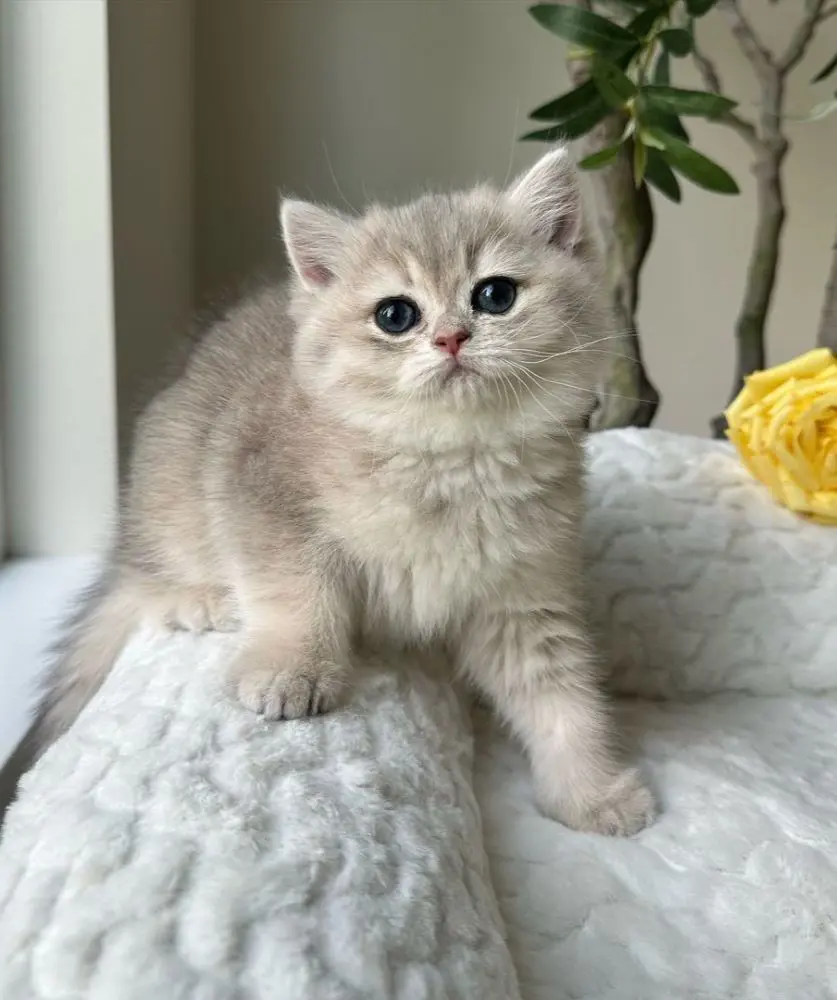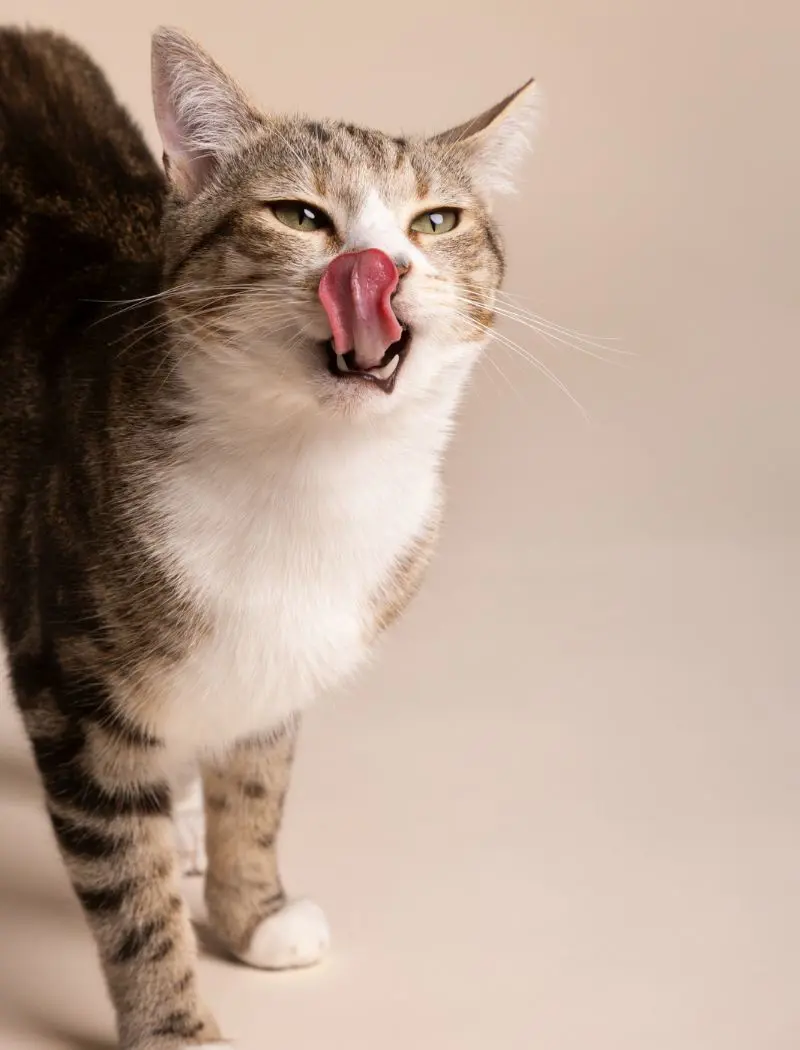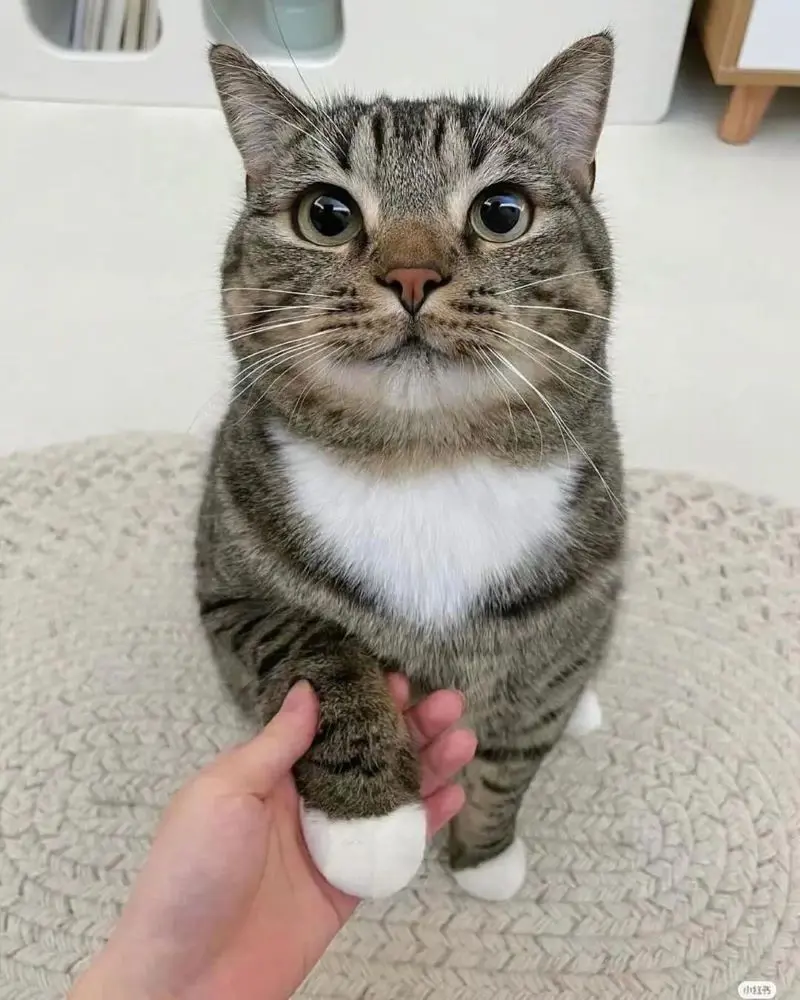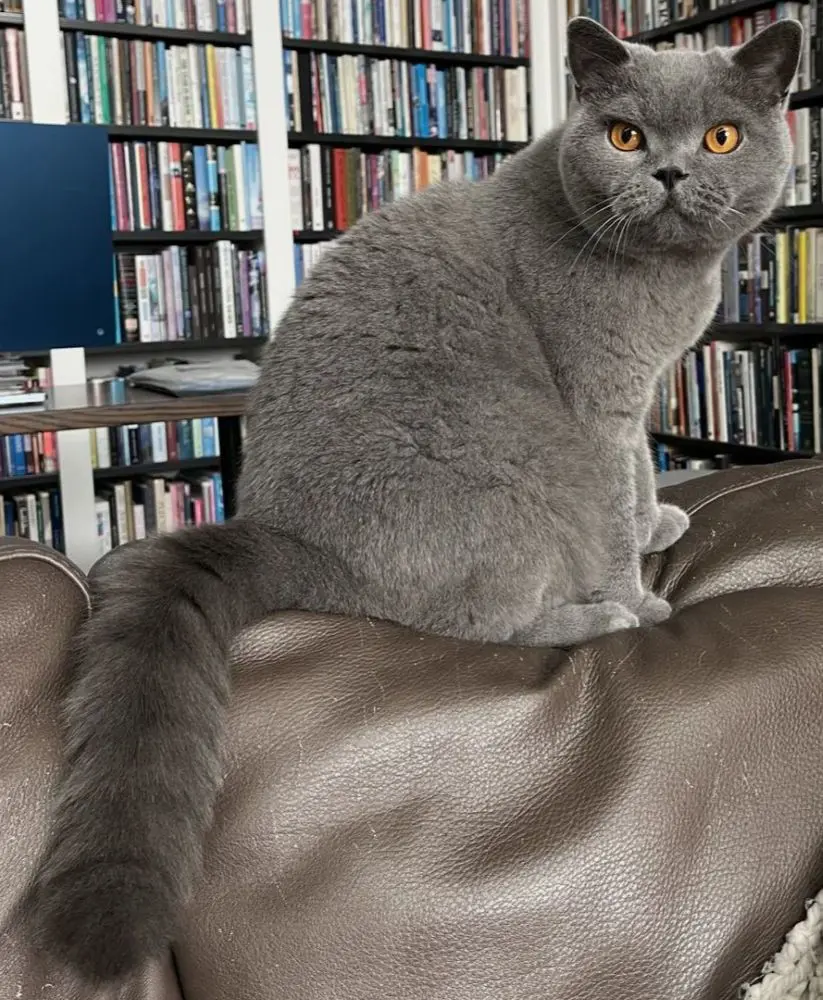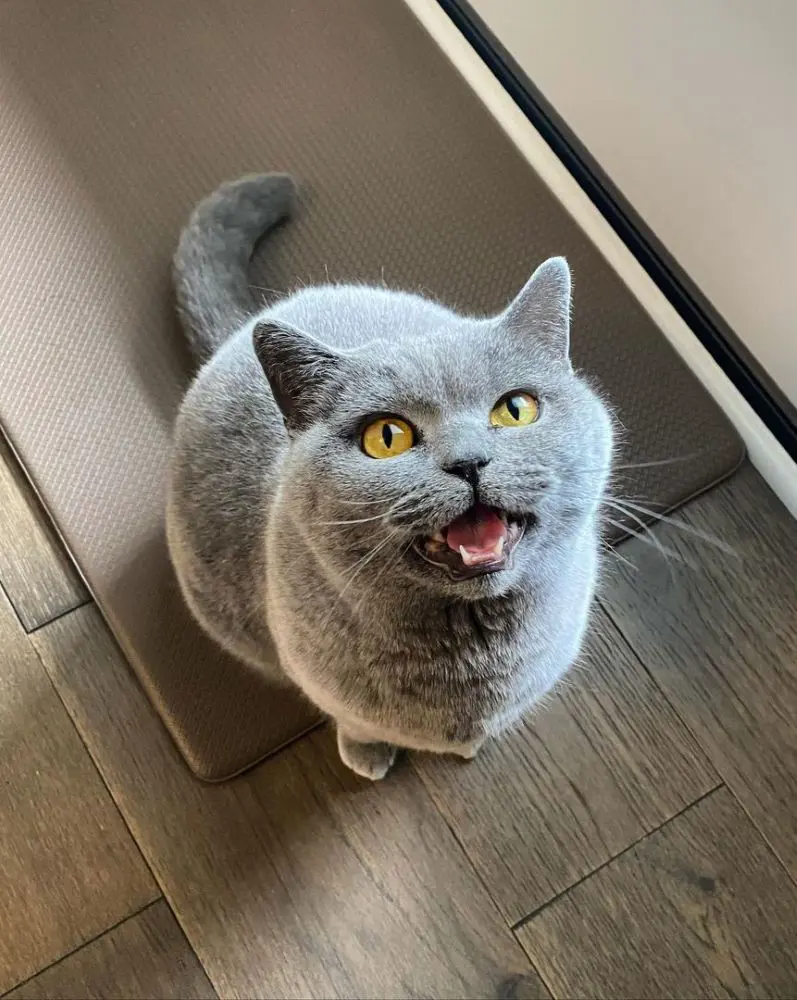Why Do Cats Wag Their Tails?
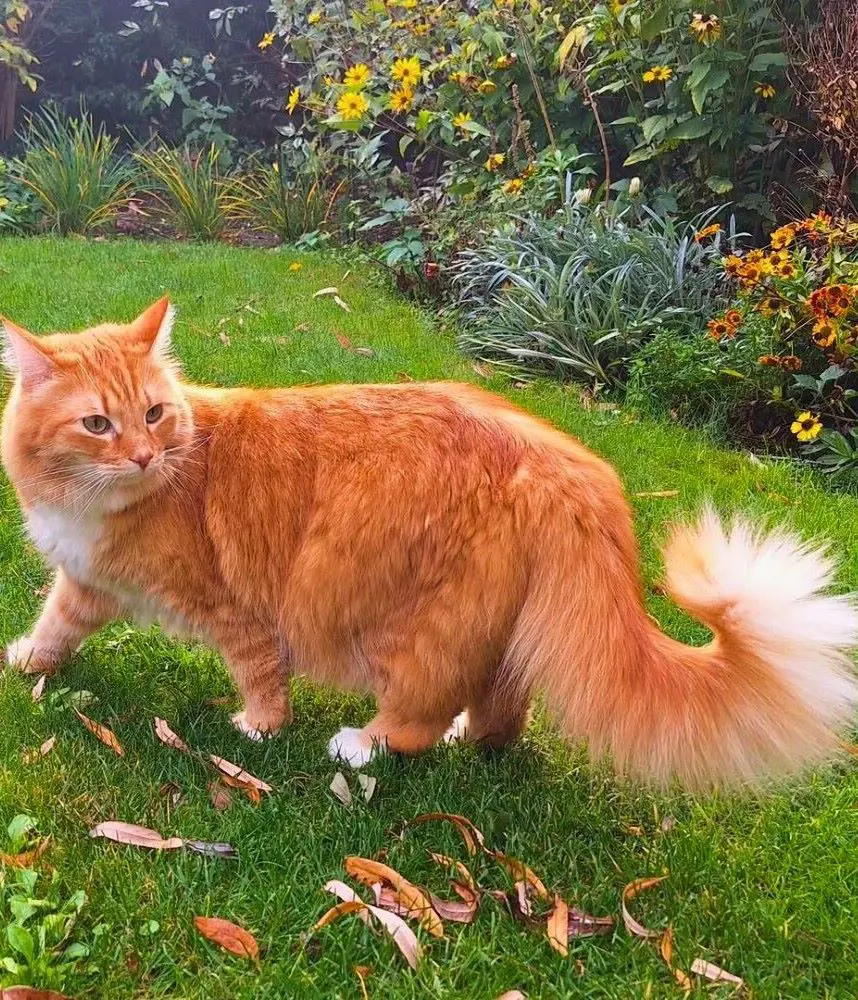
Dogs often wag their tails as a way to show their excitement or happiness. The shaking movement is usually associated with positive traits in canines, implying their moods or emotional states as happy and satisfied.
When it comes to cats, the same tail-wagging movement can be the result of both happiness and displeasure. Cats show a variety of emotions through their multiple tail movements, some of which appear alongside other behavioral changes.
If you want to learn more about why a cat wiggles its tail, continue below:
1. Excitement or Playfulness
Excited cats aren't just fun to be around, they also show us a side we may not be aware of yet. When in excitement, cats tend to raise their tails high up in the air; the split end will make a little movement in the shape of a quiver, often resembling the wagging of a rattlesnake's tail.
You are most likely to witness your cat making this tail movement after returning from a long day at work, showing your pet's excitement to see you. Likely, the cat will also rub its back on you to display their love for you.
2. Annoyance or Irritation
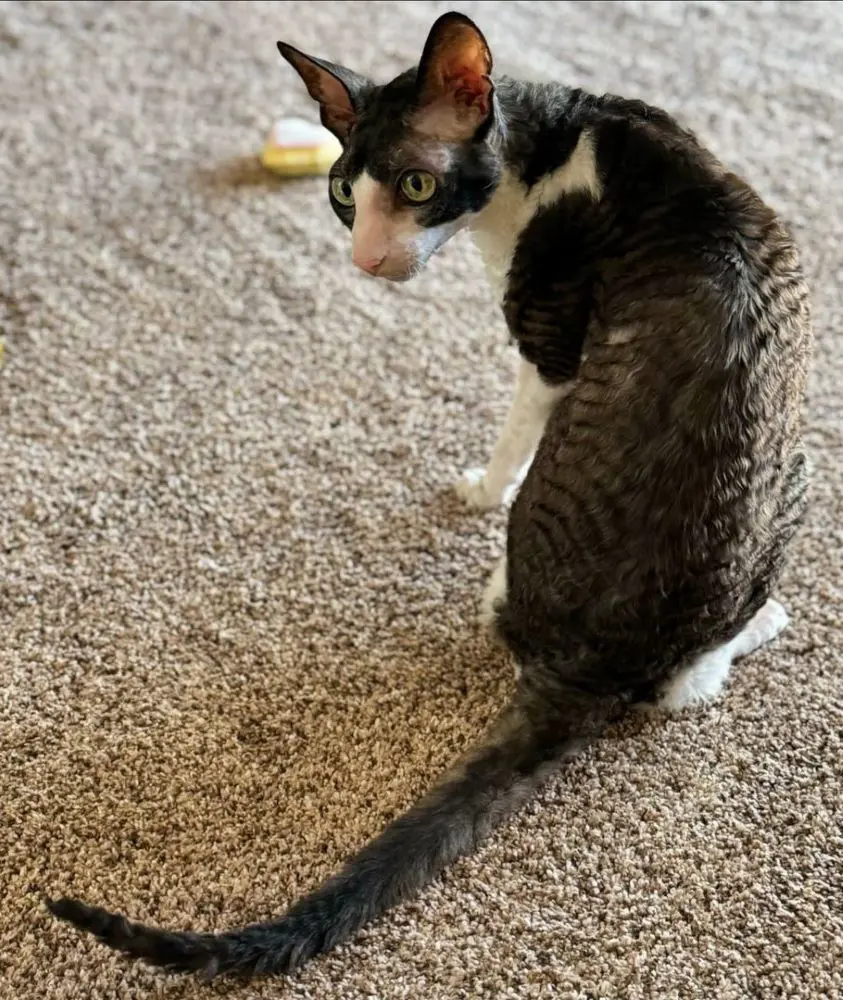
When feeling irritated or annoyed, the cat wags its tail in a unique movement as a way to communicate their frustration or anger. As sensitive animals, felines can become quickly overstimulated or annoyed by situations that can interrupt their comfort.
Annoying stimuli might include too much petting, the presence of another animal, or an unfamiliar sound or smell. Unlike dogs, cats aren't very vocal about their emotions; instead the owner should understand their mental well-being through techniques that can analyze body language.
During moments of anger, a cat may make sudden quick movements of its tail from side to side. This fast motion is often paired with additional indicators like pupil dilation, ear flattening, and rigid body position, among others. The movement can increase with the cat experiencing more discomfort or it can cease with an improvement in health.
3. Hunting Focus
Cats are obligate carnivores that need a steady diet of meat to survive. Before being domesticated, these animals used their hunting skills to catch small prey, including rodents, birds, and small mammals.
Although cats have long been domesticated, they still retain some of their wild instincts. Their love for hunting is a trait present in modern-day cats. While these kittens no longer need to hunt for food, thanks to their humans doing the job for them, cats love to play-hunt, even succeeding in getting prey in some occasions.
Normally, a hunting-centered cat will show rapid tail movement in the form of a quick twitch; this behavior shows that the cat has triggered its hunting instinct.
4. Pain or Discomfort
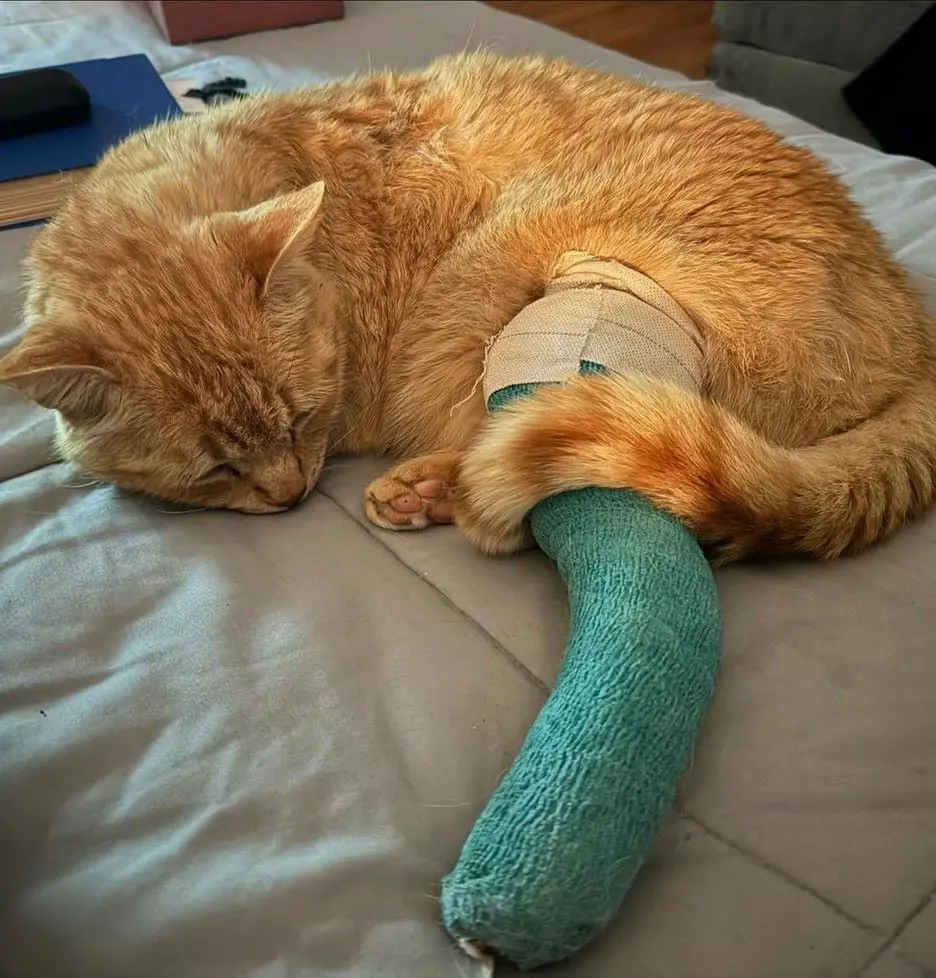
Tail-wagging in cats isn't solely influenced by their emotional or mental well-being; physical vulnerability can also trigger involuntary twitching or rapid movements in the feline tail.
Usually, a cat in physical discomfort or pain will lay down its body on the floor before making the required shaking. Similarly, the twitching doesn't serve as the only sign of pain; the cat will also likely exhibit additional symptoms like hiding, excessive vocalization, and reduced appetite.
Pretty easy to resolve, treating the symptom requires identifying the actual cause of the pain. When the factor causing the discomfort is identified and removed from the cat's body, the healing journey can finally begin.
5. Aggression Warning
While in a defensive or aggressive state, a cat will normally move its tail in forceful swings from side to side, almost resembling a whip. This motion is far stronger than a curious quiver, indicating that the cat is on high alert and potentially preparing to strike.
If you ever see your cat in this posture, you should be able to identify the reason behind the shaking. However, don't try to touch or come in physical contact as this is an open warning to stay away. If the cat is intimidated or agitated by something, remove the source of this distress immediately and let your pet calm down for a bit.
6. Contentment
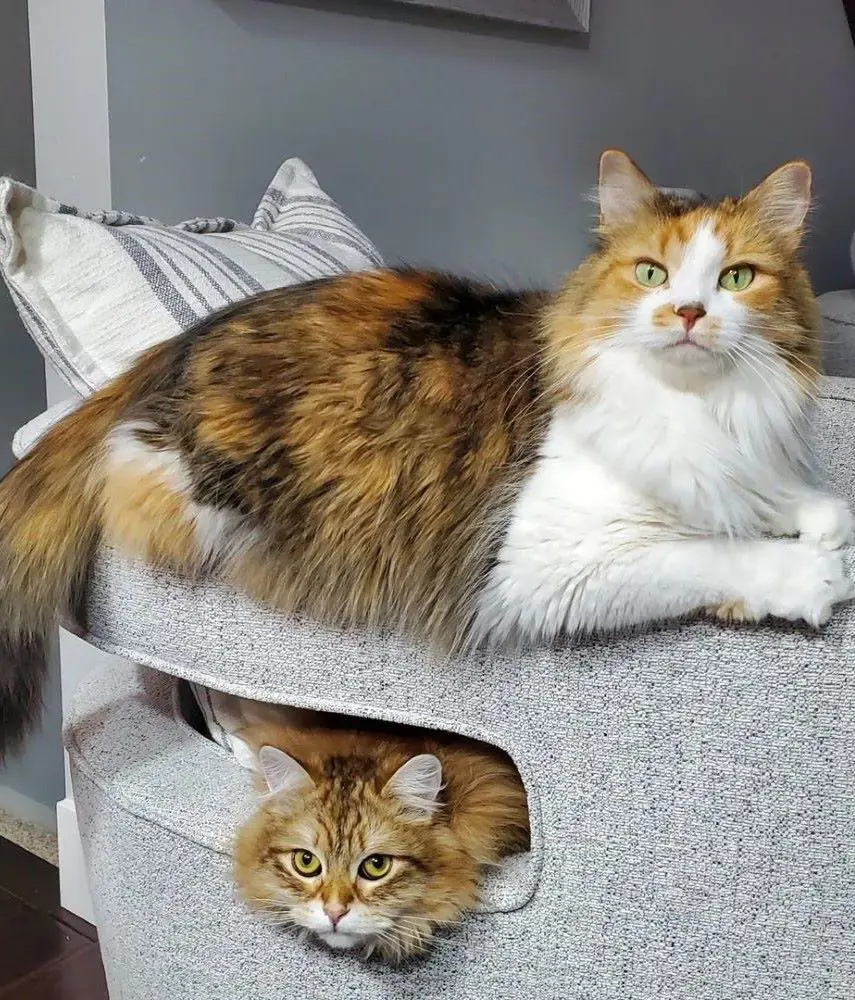
Cats wag tail as a response to satisfaction and contentment derived from a positive experience, especially after enjoying a delicious meal or visiting their favorite places. A content cat will place its tail loosely on the ground and employ a rhythmic twitch at the tip.
This gradual shaking looks almost deliberate as if the cat is lazily enjoying the moment. When lying down, the cat, meanwhile, can occasionally give a slow tail push, hinting at its sound state of mind.
7. Curiosity
A curious cat will normally display unique tail movement, more controlled than the sharp flicks caused by irritation. When the pet is exploring or observing something new, it maintains a straight tail; held vertically upward by the tailbone muscles.
Often holding its tail up or at a slight angle with a gentle flick, the tail shaking can indicate the cat’s intense interest and focus on whatever has caught its attention. Meanwhile, the movement tends to be slow and controlled, as if the cat is thinking about the situation.
8. Affection
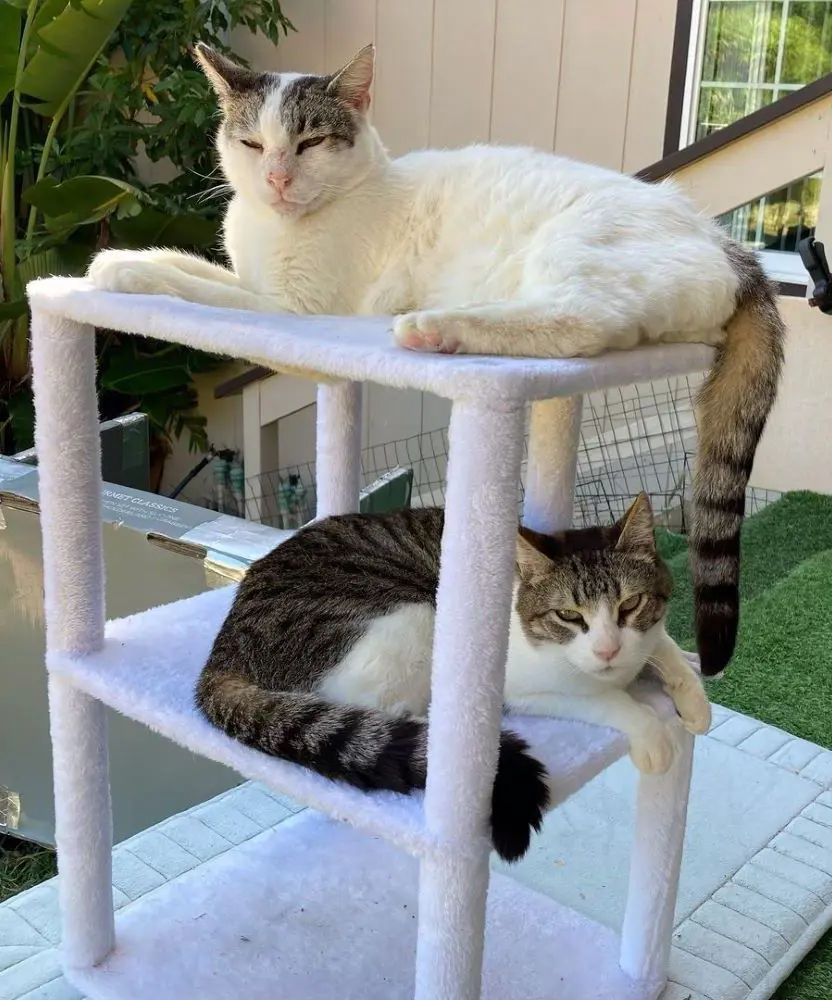
Cats are often misunderstood as cold and distant animals, only living together with humans for food. While these felines indeed get motivated with food, so do other pets like dogs.
In reality, cats are affectionate creatures that enjoy human company and a meaningful life with their families, instead of solely living to survive. Felines are shown to have higher emotional states, where they even mourn a recently deceased human or another pet in their families.
When in the mood to show love or affection, a cat will normally wrap its tail around a human's body part, likely an arm, leg, or even neck. Besides their tail movement, cats are also known to give cool head butts to their humans as a show of love.
9. Uncertainty or Conflict
Besides being an instinctive response, tail movements in cats can also be used to understand their emotional state. A cat facing danger or a potentially violent encounter with another animal will get its tail plumped up to appear bigger for the confrontation.
Additionally, some kittens will also rapidly shake their tails to show their heightened alertness as a result of fear or as a defensive maneuver. The movement supposedly warns any predator or other animals of the cat's plan to attack if approached, scaring off any animal or humans in proximity.
10. Sleepy Dreaming
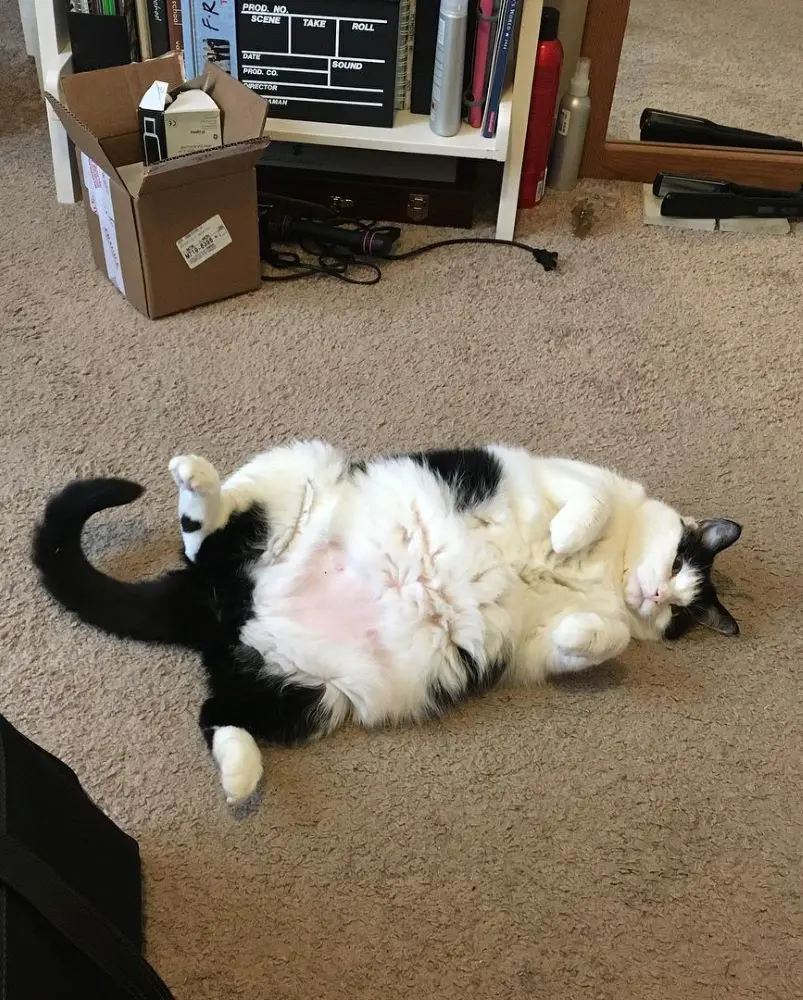
Twitching tails while dreaming or sleeping is a classic reflection of brain activity during the rapid eye movement (REM) stage of sleep. Similar to humans, cats experience the REM stage while dreaming; dreaming can also cause involuntary muscle movements, including those in the tail.
Unlike the powerful movements witnessed during wakeful states, these movements are gentle and less controlled, often seeming random. The cat’s body usually remains relaxed, with the tail twitching occasionally without any clear pattern.
Understanding the Science Behind Cat Tail Wagging
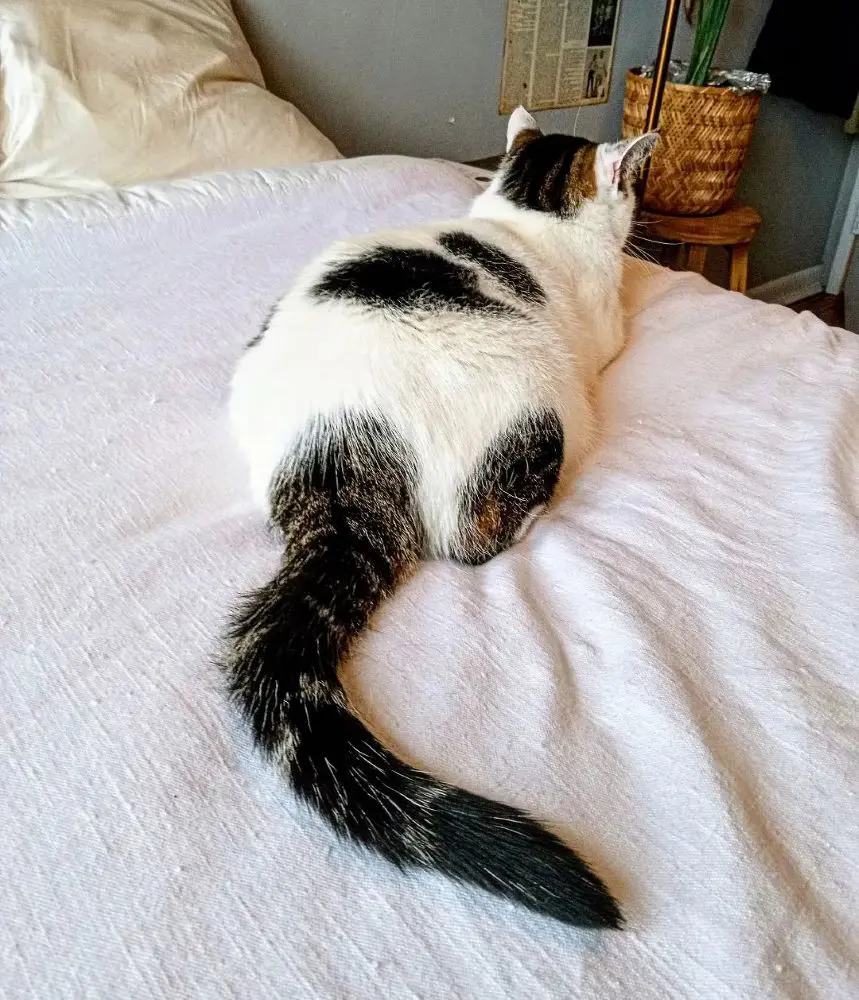
Unlike dogs, cats don't simply wag their tails to show their happiness. In fact, a cat's tail and its movements play an important role in conveying the cat's body language. During different mental and emotional states, the cat may make different tail gestures, each unique and tied to a specific emotion.
As an extension of a cat's spine, the tail is linked to multiple muscles and ligaments. The vertebrae allow control over each movement, ranging from small twitches to sweeping motions.
Regulated by both the central and peripheral nervous systems, the tail moves according to the signals it receives from the nervous system.
Social Communication Through Tail Wagging
While some tail movements are instinctual and involuntary, as they grow up, cats also learn to use their tail motions to send signals for social interaction. Kittens often observe their mother and siblings to interpret tail language, teaching them to communicate effectively with their family members.
Tail postures like the "question mark" shape, where the tail is upright with a little bend at the tip, is a sign of friendliness, often learned through positive encounters with humans or other cats.
In many occasions, these tail signals help the cat avoid unwanted conflicts communicate affection, and assert boundaries within their social structure.
Why Do Cats Swish Their Tails?
Swishing tail movements in cats usually reflect a side-to-side motion that varies in speed and intensity; it can be slow, quick, or medium-intensity, depending upon the emotions of the cat.
Watching a cat’s tail movement closely can help you understand its emotional state, whether the cat is calm, excited, or in need of some time alone.
For instance, when a cat swishes its tail slowly, it’s often focused on something interesting, like a potential prey or a toy; this slow swishing is part of its stalking behavior seen in hunting. Meanwhile, a quick swishing is an indicator of an annoyed or overstimulated cat - this is a strong sign that the cat wants to be left alone.
Additionally, cats may also swish their tails when they’re excited or playful. Often noticed during playtime, this movement helps the cat release its repressed energy, witnessed as a sudden pounce or burst of activity.
Does Tail Wagging Indicate Illness In Cats?
Although tail wagging in cats is commonly associated with mood and emotion, it can occasionally be a sign of discomfort caused by an illness. Here's how to interpret these tail signals to determine if your cat is indeed sick and in need of assistance:
1. Lethargic or Unusual Tail Movement
If a cat is moving its tail differently than normal - such as very slow or dragging movements - it is possibly a sign of physical pain triggered by an illness or injury.
A limp tail, particularly held low, may indicate physical discomfort or even nerve damage in the tail.
2. Frequent or Restless Wagging
Constant movement in the tail is a strong indicator of restlessness. If the tail is twitching nonstop, something could be bothering the cat, either externally or internally. External discomfort can be caused by flea infection or skin irritation, whereas an internal issue could be linked to a digestive upset.
3. Tail Sensitivity
Cats, who are used to petting, usually don't have a problem with people touching their tails. However, when a cat suddenly becomes sensitive about its tail being groomed, it could suggest pain, possibly due to an injury, infection, or a skin issue.
Cats with arthritis, particularly in the lower spine or hips, may also show tail sensitivity or twitching.
Top Lists
